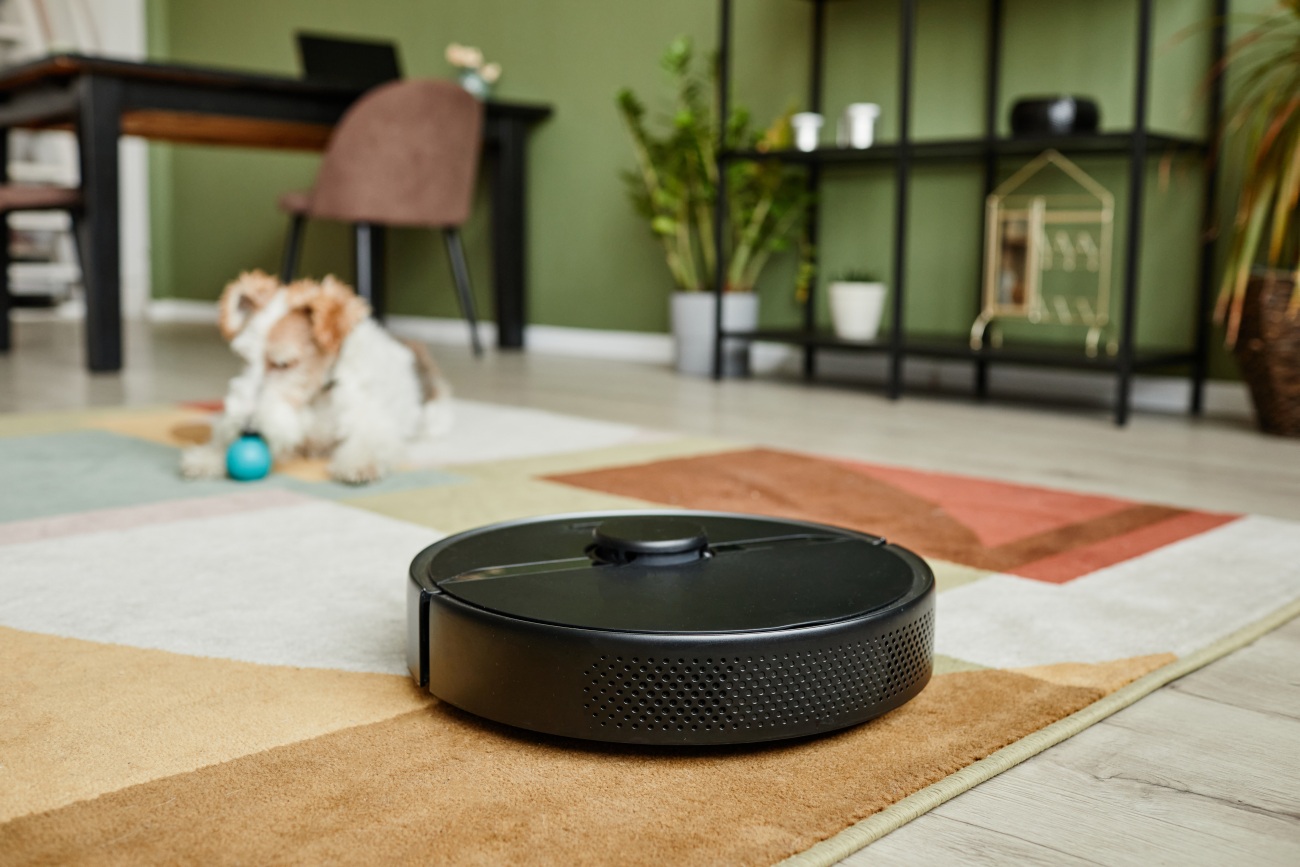Having a robot vacuum zooming around your house and effortlessly keeping it clean is a great idea but:
- Will it replace your upright or canister vac?
- Does it eliminate the need for regular vacuuming?
- Will it clean all types of floors?
- How much does a robot vacuum cost?
Robot vacuums have improved a great deal since they were first introduced over two decades ago. Is it enough to make them worth it?

Types Of Floors
Regardless of the type of vacuum you purchase, the type of floors in your house and the layout of your rooms are a big consideration. Robot vacuum cleaners have problems with certain types of floors, changes in elevation, and stairs. Some models can scratch hardwood floors.
- Shag Rug. Or any long knap carpet is difficult for robot vacuums to clean effectively. The long fibers get stuck in the vac’s brushes and even though it weighs only 13 pounds the machine may sink too deeply into the rug to clean or move properly.
- Stairs. Robot vacuums do not clean stairs. They have to be physically moved to different levels.
- Floor Transitions. Most robot vacuums can climb over half-inch transitions. Some models work on transitions over three-quarters of an inch high. No robot vacuum can get over a one-inch transition.
Robot Vacuum Pros
Robot vacuums have many positive attributes that make them an attractive addition to your household cleaning tools.
- Convenience. Just turn them on and they will vacuum your floors. Program them to work when you are home, away, or asleep. They charge themselves without your help and some of the newer units self-empty into a container at the charging station.
- Quiet. Robot vacuums produce noise in the 55 – 80 decibel range. Some are much quieter–under 50 decibels. (70 decibels is the amount of noise a dishwasher makes.) Traditional vacuum cleaners usually produce close to 80 decibels of noise. Programming the vacuum to operate when the house is empty solves the noise problem completely.
- Energy Saver. Charging a robot vacuum for 2 – 3 hours gives it 60 minutes of working time and uses 25 – 90 watts of power. Traditional vacuum cleaners use an average of 1400 watts of energy per working hour.
- Easy To Use. Quick and easy to set up right out of the box. Schedule cleaning times and zones. Connect to phones and Alexa.
- Versatile. Cleans tight spaces, along walls, close to and under furniture.
- Lightweight and Easy To Store. Small–about 14” in diameter and 5’ high. Most weigh under 14 pounds.
Robot Vacuum Cons
As handy as robot vacuums are, they are not perfect for every family or cleaning situation.
- Does Not Replace Conventional Vacuums. Robot vacuums are good for regular maintenance cleaning. They keep dust, dirt, and pet hair off the floors but a deep cleaning with a powerful traditional vacuum cleaner is necessary every couple of weeks.
- Less Suction. Smaller motors have less power and produce less suction.
- No Attachments. Strictly a floor cleaning device with no hose or attachments.
- Shorter Lifespan. Usually lasts 4 – 6 years compared to the lifespan of an upright vacuum of over 8 years.
- Small Capacity. The onboard dust bin usually holds less than half a quart of material. Conventional vacuum capacity ranges from one quart to over three quarts.
- Cost. Basic robot vacuums start around $200.00 and range up to $1500.00 for high-end models.
Robot vacuums are not essential cleaning equipment. They are nice-to-have work and time savers that keep floors clean but lack the ability to clean furniture, stairs, and curtains. If saving time, convenience, and cleaning efficiency is essential for your lifestyle, a robot vacuum cleaner is a perfect addition to your house.


